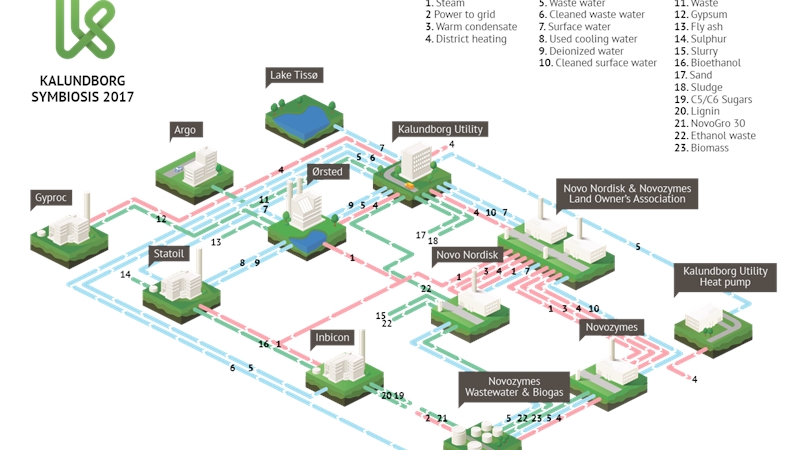Improving sustainability while reducing costs is not new to the pharma manufacturing industry. As discussed in previous TechTalk articles, many processes are highly energy-intensive and therefore very expensive. Finding quick and efficient ways to increase efficiency in these areas has been an important part of improving sustainability for some time.
But once quick fixes have been implemented, how do companies move further to meet their increasingly ambitious sustainability goals while balancing costs? How do they assess whether an investment is truly sustainable when considering all impacts – including social and financial? And how do they avoid chasing sustainability initiatives that look good on paper (but perhaps don’t work well in practice)?
Balancing costs with environmentally and socially positive action
Although different pharma companies take different paths in their sustainability strategies, they often surround two areas. Some focus on energy, such as optimizing energy performance, utilizing solar panels or incorporating heat pumps into their facility design. Others focus on reducing their use of plastics or the quantity of chemicals they use.
Alongside this, there has been a rise in specific sustainability targets from pharma companies, such as reducing the amount of CO2 produced by a facility by a certain percentage. New facilities typically set impact reduction targets of 20-50% compared to older or reference facilities.
However, “sustainability” is not only about environmentally friendly solutions. It is also about improving financial and social impacts long-term. In pharma manufacturing, sustainability links capital expenditure and operating expenditure to environmental impact and society.
In recent decades, there has been a focus on energy efficiency projects that have a short payback period of around 5 to 7 years. This simple approach is easy to communicate, yet only measures the financial part of the scenario for a short period of time. For example, measuring the savings generated from a heat pump investment for only the first 5 to 7 years ignores more than 50% of the equipment’s long-term impact, since it has a lifetime of 25 years.
Furthermore, focusing on short payback periods fails to take into account the damaging effects of CO2 emissions on future generations. According to the official U.S. estimate of the Social Cost of Carbon, this could be around $50 to $75 per ton of CO2 from 2030 onwards; a significant expense.
Ideally, pharma companies should implement initiatives where CO2 emissions can be reduced to a lower cost than $50-75 per ton. If not, the bill is simply forwarded to future generations.
Does your investment hold long-term value? The risks of greenwashing.
Many companies are aware that green initiatives are good for branding and PR. This added benefit has pushed the pharma industry to consider larger and riskier sustainability investments, particularly if the project makes an organization more attractive to stakeholders and potential employees.
On the flip side, “greenwashing” and choosing projects solely based on branding and PR opportunities can be problematic. Unfortunately, the best and most efficient green initiatives rarely get the biggest headlines. Without proper analysis into the outcome of an investment idea, there is real risk an initiative could negatively impact the environment, operating expenses and a company's reputation. More and more companies are being scrutinized in relation to their sustainability initiatives, so if you don’t analyse the true impact of your investment, somebody else may well do it for you.
Despite this risk, companies can often aim for low accounted emissions within their boundaries and ignore the ripple effects to the rest of society and the ecosystem. To take an example, changing from natural gas to wood pellets does save CO2 for the company that makes the shift. But if wood pellets are a scarce resource they will be substituted elsewhere with fossil fuels. Exporting wood pellets from Estonia, for instance, increases the combustion of coal for their own power plants, cancelling out the C02 emission benefits.
Another greenwashing issue is the use of carbon-neutral electricity and carbon offsets for activities where emission reductions are difficult – such as air travel and the transportation of goods. Although the intentions are good, it is always more climate efficient to reduce rather than offset. This could mean reducing the need for transportation by buying local or building closer to the market. This would save energy by reducing electricity usage, avoiding travel, and selecting suppliers based on real emissions
Carbon emission reductions for the pharma industry need careful analysis and investment
Unfortunately, many still assume reducing C02 can be done quickly and cheaply. In reality, true emission reductions (excluding offsets and carbon neutral energy) require careful analysis and investment. However, they are vital to reduce our environmental impact long term.
Overall, increased awareness around climate change and environmental damage has been hugely positive for the pharma manufacturing industry. The effort to improve across the board is a move in the right direction for both environmental and cost efficiency. It is therefore important to remember that big ideas are not always the best, and before investing you should analyze the true impacts of your initiative on both the environment and your operating expenses.


